"(RAD) Running à Dérive"
The lessons drawn from dérives enable us to draft the first surveys of the psychogeographical articulations of a modern city. Beyond the discovery of unities of ambience, of their main components and their spatial localization, one comes to perceive their principal axes of passage, their exits and their defenses. (...) The only difference [from early navigational charts] is that it is no longer a matter of precisely delineating stable continents, but of changing architecture and urbanism.
--Guy Debord, "Theory of the Dérive," 1958
Richard Haden's Running à Dérive is a variation of Guy Debord's dérive. While he conditions his body for long distance exertion, he explores the neighborhoods, infrastructures and overlapping zones of poverty and prosperity in Miami. His conscious and subconscious thoughts oscillate as he runs for hours at a time, and the memory of occurrences during various runs alternately blur and come into sharp focus. With the informal studies and observations that come from these meditations, he seeks to encounter an entirely new and authentic experience.
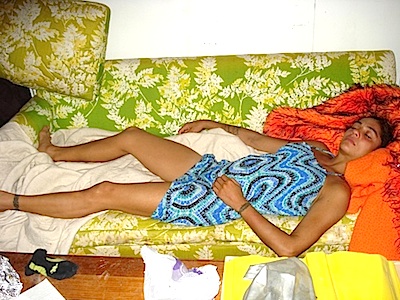
"Mercedes Adrift" 2012, Photographic print, 12 x 18 inches
One way Haden created an opportunity for study while running is by speaking with people he met along the way, no matter his expectation of the result of beginning a conversation. He encountered Mercedes, a prostitute who plies her trade in order to fund her drug habit, on one of these runs. Again, over time, he cultivated the relationship so that she opened up to him. It helps, he said, that he knows the language of addiction, since he lived the drug culture, back in the 1980s Lower East Side. He began recording their conversations on video, with her permission, and edited it, in collaboration with Bill Bilowit (filmmaker at Wet Heat Project), as a piece for this exhibition.
"Entering the Republic of Misery" (Excerpt), 2011
in collaboration with Bill Bilowit (editor),
HD digital video, 26 minutes, loop playback
With "Entering The Republic of Misery" anchoring the show, Haden's hyper-realist sculptures of odd items he finds on his runs carry a new significance. The aspect of drifting associated with them (a series of early sculptures of weathered Clorox bottles were called Drifters) and their metaphorical relationship to the city gets thrown into relief.
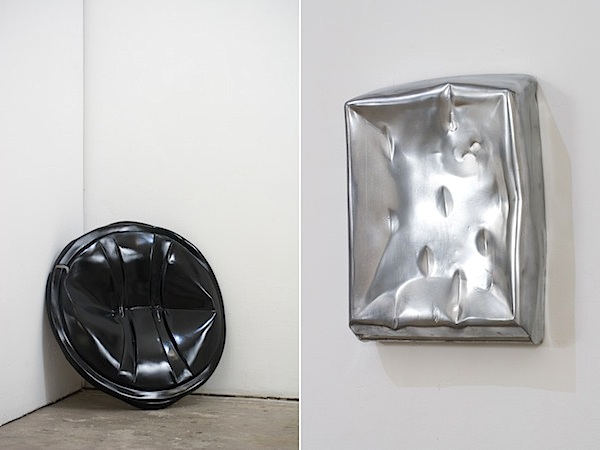
"Black OP Bin Lid" 2011, Polychromed wood, 22 x 24 x 6 inches
"Dispenser" 2011, Polychromed wood, 12 x 4 x 11 inches
He collects and then meticulously maps the topography of a truck mirror, trashcan lids, or a paper towel dispenser in wood. He camouflages his intervention by making these imitations appear to be the very thing they reference, then intervenes again by dislocating them and by inscribing a playful message on their surface. Play is another way to dérive. An array of his digital prints of scenes that strike him along the way complement the sculptures.
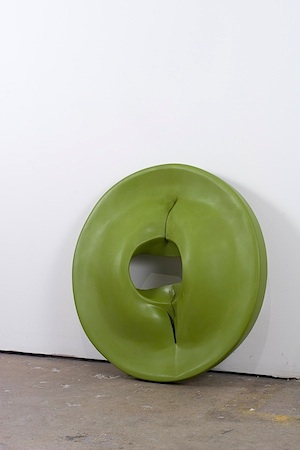
"Ripped at NW 7th Ave. and 54th St."
2011, Polychromed wood, 25 x 25 x 6 inches
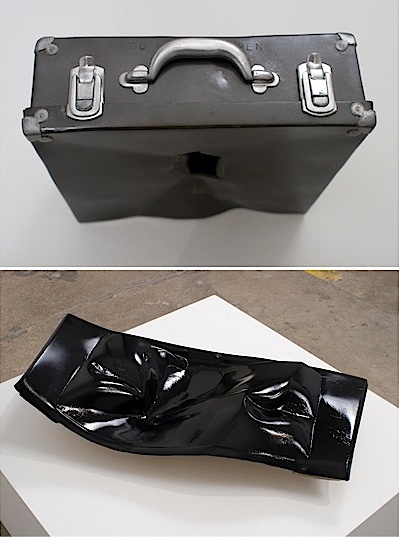
"A Craftsman's Case" 2011, Polychromed wood, 17 x 18 x 6 inches
"Mercedes / One Time" 2011, Polychromed wood, 25 x 14 x 6 inches

Photographic prints, wall installation at Dorsch Gallery, 2011
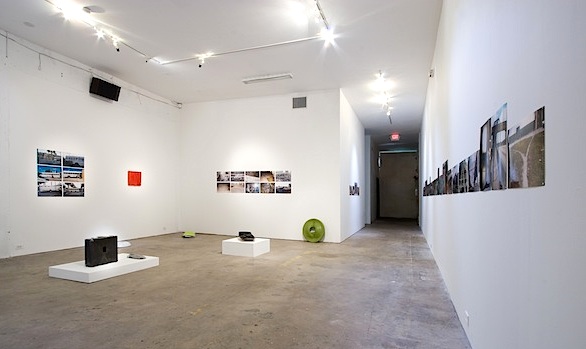
Exhibition space, installation at Dorsch Gallery, 2011
"(RAD) Running à Dérive" opened at Dorsch Gallery
Miami, October 7, 2011
Text by Tyler Emerson-Dorsch
